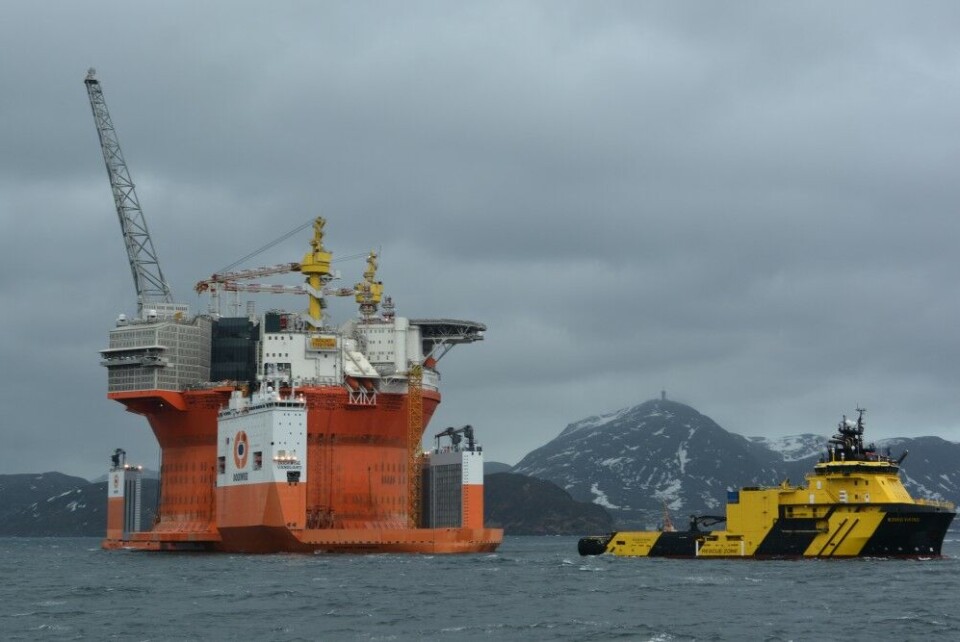
Arctic oil and gas: the wrong solution to the world’s energy crisis
Skyrocketing energy prices and the consequences of the invasion of Ukraine are encouraging some global leaders to expand hydrocarbon production in the Arctic. If this goes ahead, it would be a disaster.
The Arctic is warming faster than any other region on Earth. But even as climate change threatens its unique ecosystems, and as thawing permafrost undermines its physical human infrastructure, some powerful voices are using the current energy crisis to call for increased oil and gas production in this most vulnerable part of the world.
This we believe would be both environmentally catastrophic and economically wrong-headed.
At WWF, we have long opposed further oil and gas extraction in the Arctic. Not only is it one of the most pristine environments left, it is also uniquely vulnerable to pollution and accidental spills. It is difficult for operators to respond to disasters in this remote region, there is no effective way to clear up oil spills in sea ice, and low temperatures slow natural processes that break down spilled hydrocarbons.
In recent years, a growing number of Arctic governments have slowed or stopped further oil and gas development. Greenland has banned oil exploration, while Denmark, Sweden and the Canadian province of Quebec have joined the Beyond Oil and Gas alliance with the aim of facilitating the managed phase-out of oil and gas production. For years, Canada’s federal government has had a temporary ban in place on offshore oil drilling in the Arctic.
But the invasion of Ukraine and the urgent drive to close energy markets to Russian oil and gas has led some countries to reconsider their green ambitions. In addition, rocketing energy prices have raised the prospect of expanding oil and gas extraction in the Arctic.
Going to the edge
In Norway for example, the government is proposing an expansion of exploration in the pristine ice edge in the Norwegian part of the Barents Sea. The ice edge, which is teeming with biodiversity, is critical for the survival of many threatened Arctic species. Meanwhile, Canada is mulling a review of its current moratorium on Arctic drilling and is considering starting new production in Bay de Nord in Newfoundland. And efforts to scale up production in Alaska, including in the Arctic Refuge, are back on the table.
The environmental case against increased production in the Arctic is clear and irrefutable. Not only does drilling offshore increase the risk of disastrous spills, threatening wildlife, habitats and communities, but the increased greenhouse gas emissions from greater fossil fuel use will accelerate climate change in the region. Average temperatures in the Arctic were 3.1°C above pre-industrial levels in 2019, compared with the 1°C average increase globally. Last month, a polar heatwave meant temperatures were a staggering 30°C above usual levels.
That level of warming is literally eroding the very foundations of hydrocarbon extraction in the region. Much of the oil and gas infrastructure is built on permafrost which is thawing. This is necessitating many millions of dollars of investment simply to shore up existing capacity. Indeed, one of the worst pollution disasters in the region in recent years – an oil spill by Norilsk Nickel which polluted two rivers within the Siberian Arctic – was also related to abrupt permafrost thaw.
Stranded assets
An expansion of oil and gas extraction is also economically misguided. Energy prices have indeed risen sharply in response to a supply shock caused by Russia’s invasion of Ukraine. The sharp rise in prices is likely to be a short-term response to the invasion of Ukraine, and prices are predicted to return to levels lower than before the invasion. If new projects are given the go-ahead based on current oil prices, investors could easily see their investments stranded.
In addition, most energy analysts believe that oil and gas demand is in decline as the world acts in response to climate change, meaning that any new oil or gas extraction would ultimately be for nothing. That’s because it takes an average of 16 years before newly discovered resources can enter production, and so any new finds would only be coming on stream once the energy transition was well underway. Indeed, the current crisis is likely to accelerate this transition, as energy security considerations join concerns about climate change as strong reasons to rapidly move beyond fossil fuels.
One side effect of Russia’s diplomatic and economic isolation is likely to be heightened peril for the Arctic and for the environment more broadly: Its government’s already lukewarm readiness to act on climate change is likely to evaporate altogether. The Russian government will likely respond to western sanctions with environmental deregulation. A lack of investment and access to knowhow will accelerate the deterioration of its infrastructure in the Arctic and increase the risk of incidents.
All of this makes it even more important that other Arctic nations resist pressure to increase their own exploitation of the region’s natural resources. Instead, countries across the world must redouble their commitments to conserve this most precious and vulnerable part of the world against climate change and increasing human activity.















